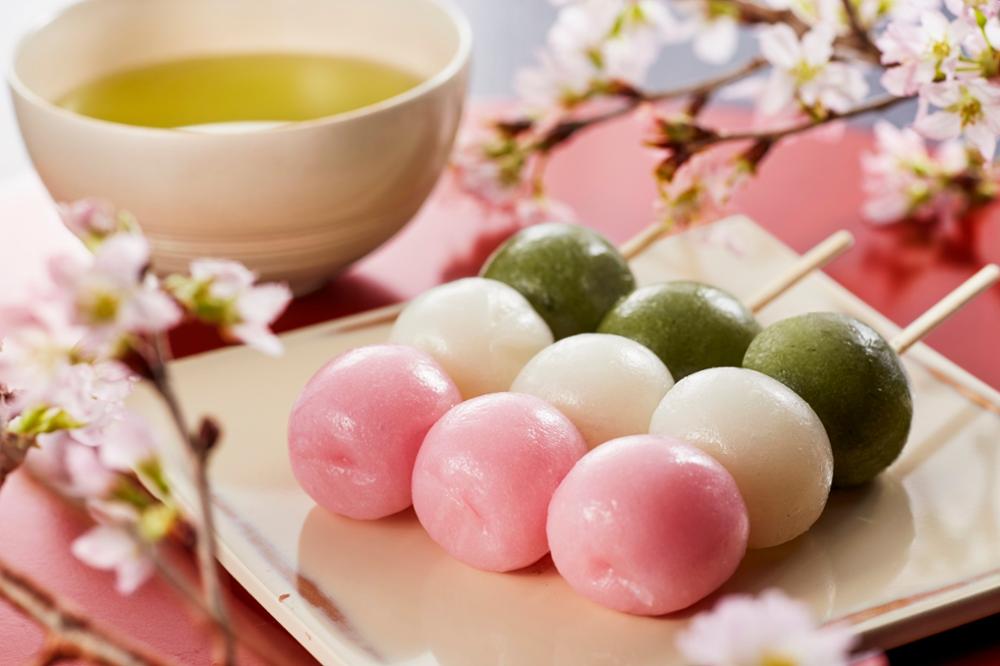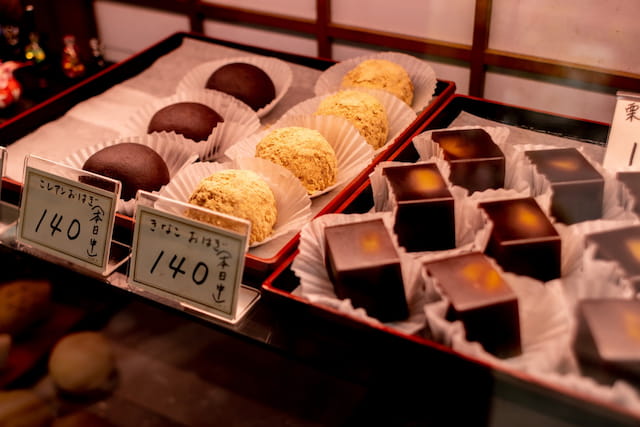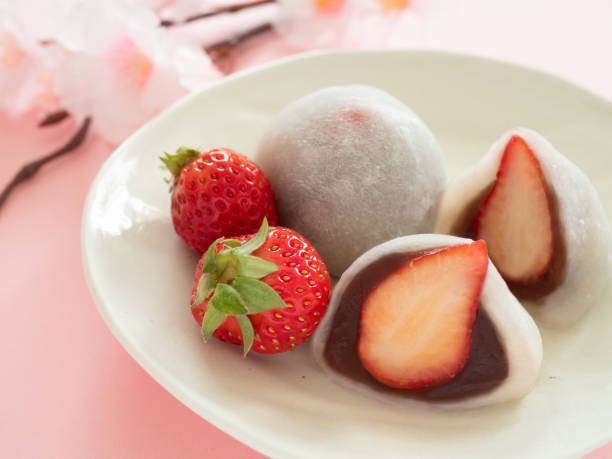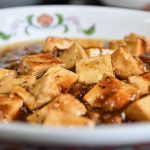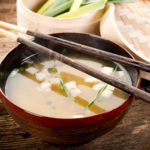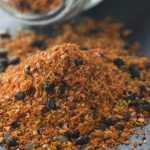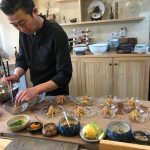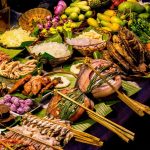Manga, anime and Japanese culture are becoming more and more popular, which has led to their cuisine becoming better known internationally. This is not only true for savoury dishes, but also for sweet dishes. Surely names like mochi or dorayaki ring a bell, right? Today, however, we are going to tell you about another pastry that you will know if you have been a loyal follower of the Naruto series. Yes, it’s dango, a japanese desert in the shape of a skewer that will captivate you in texture, taste and appearance.
What is Japanese dango?
Dango is a traditional Japanese dumpling made of glutinous rice, sugar and water. The peculiarity of this dessert is its shape, as it is kneaded into small balls that are cooked until they are cooked. They are then cooled in water and stuck on a wooden skewer, like a kebab. Some of the varieties can also be served with a sauce.
The colours of these balls are usually white, yellow, pink or green, depending on the ingredients that are added: strawberries, green tea, egg, etc. However, there are many varieties of dango, as the combinations are endless. In addition, it is usually served with green tea, like most wagashi.
Origin and history of dango
The origins of dango can be traced back to a tea house in Kyoto. The name of this teahouse was Kamo Mitarashi and it was located very close to the Shimongan Shrine. It is said that the name of the sweet, “mitarashi dango” was chosen because of the similarity of the balls to the bubbles in the water of the Matarashi River, located at the entrance of the shrine.
The original dango was inspired by the shape of a person: five pieces were placed across a wooden skewer, each representing a part of the human body. The first of the balls was the head, the second and third were the arms, and the fourth and fifth were the legs. These balls were white in colour and were served with a sticky but delicious soy sauce glaze!
Types of dango
As mentioned above, the types of dango can vary depending on the ingredients used to make them. The combinations give rise to all varieties, but to show you all of them would require a very, very long list. So, in a more concise way, here are the most popular ones:
Mitarashi Dango: As mentioned above, this is the best known type of dango as it is the traditional one. It is usually available in shops and supermarkets. It consists of white balls covered with a sweet and sour syrup made from soy sauce, sugar and starch.
Anko Dango: This type of dango is characterised by the balls covered with azuki bean paste known as anko. It is a very popular variety, enjoyed by people of all ages throughout the country.
Tsukini Dango. This variety is prepared on the Jugoya festival, where the Japanese commemorate the harvest by gazing at the moon. The name of this dango means “moon-viewing dumplings”. The dumplings are white, referring to the colour of the moon, and are placed on a plate in the shape of a pyramid. Enjoying the moon together with these delicious morsels sounds good, doesn’t it?
Bocchan Dango: This variety consists of three different colours and flavours: red (from the azuki beans), yellow (from the egg) and green (from the green tea).
Hanami Dango: This type of dango was traditionally made during the sakura flower sighting season. It is available in three colours: pink, green and white, simulating cherry blossoms. The balls of this dango are usually strung on a bamboo stick. Of course, these pastel colours make it the ‘cutest’ variety.
Salted dango. There are also salted dango, which are usually found coated with teriyaki sauce or wrapped in nori seaweed.
How to serve dango
Dango is a year-round sweet. However, there are some varieties that are eaten on certain holidays or during certain seasons. As you have seen, for example, tsukini dango is mainly eaten during the Jugoya festival. But the truth is that dango transcends the seasons and can be found at street food stalls no matter what time of the year it is.

